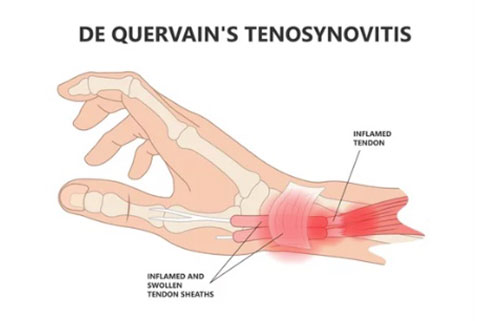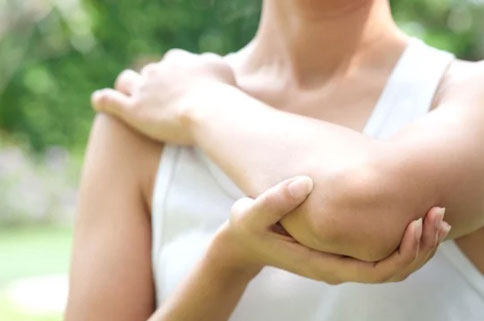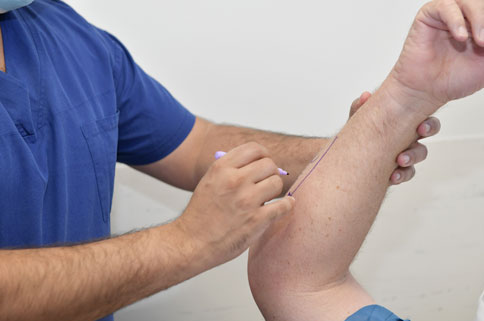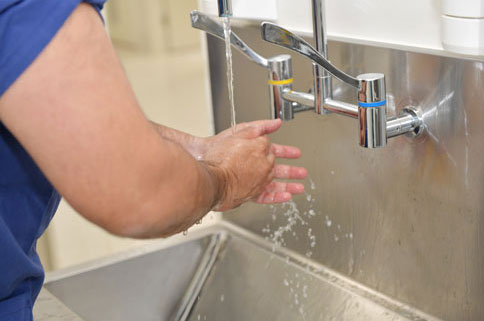
De Quervain tenosynovitis is a painful condition that affects the tendons in the wrist and thumb. It occurs when the tendons on the thumb side of the wrist become irritated or inflamed, causing pain and difficulty with wrist and thumb movement.
Surgical treatment for De Quervain tenosynovitis is typically considered when non-surgical treatments such as rest, immobilisation, and physical therapy have not provided sufficient relief.
The Surgical Procedure
The surgical procedure to treat De Quervain tenosynovitis is called a De Quervain release. The surgery is typically performed on an outpatient basis and takes about 15 to 20 minutes to complete.
During the surgery, Dr Singh will make a small incision in the wrist and thumb area to expose the tendons. The tendons responsible for the condition, called the abductor pollicis longus (APL) and the extensor pollicis brevis (EPB), will be identified and then released from the fibrous sheath that surrounds them.
This release allows the tendons to move more freely without becoming trapped or irritated, which should alleviate the symptoms of De Quervain tenosynovitis.
Once the tendons are released, the incision is closed with sutures or staples, and a sterile dressing is applied to the area. A splint may be placed on the wrist and thumb to immobilize the area and promote healing.
After the surgery, patients typically need to rest and avoid using the affected hand for several days. Physical therapy may be prescribed to help improve strength and flexibility in the wrist and thumb.
Recovery Timelines
The recovery timelines following surgical treatment for De Quervain tenosynovitis can vary depending on the individual patient and the extent of the procedure. However, most patients can expect to return to normal activities within a few weeks to a few months after surgery.
Immediately after surgery, patients will typically need to rest and avoid using the affected hand for several days to allow the incision site to heal. Pain and swelling in the wrist and thumb are common during this time, but can usually be managed with medication and ice.
After a few days, the surgeon will typically remove the sutures or staples and evaluate the incision site to ensure proper healing. A splint or brace may be used to immobilize the area and protect the wrist and thumb as they heal.
Physical therapy may be prescribed to help improve strength, flexibility, and range of motion in the wrist and thumb. This may involve exercises, stretches, and manual therapy techniques to help restore normal function.
Most patients are able to resume light activities within a few weeks after surgery and can typically return to full activities within a few months. However, it is important to follow the surgeon’s instructions for recovery and rehabilitation to avoid re-injury and ensure a successful outcome.
It is important to note that recovery timelines can vary based on individual factors such as age, overall health, and the extent of the surgical procedure. Patients should discuss their specific recovery plan with their surgeon and follow their instructions carefully to optimize their recovery.
Potential Risks
Risks associated with surgical treatment for De Quervain tenosynovitis include infection, bleeding, nerve damage, scarring, and stiffness or weakness or recurrence. The procedure is generally considered safe and effective however or relieving the symptoms of De Quervain tenosynovitis.
Estimate of Fees
As a privately insured patient at Midwest Orthopaedics, typically, costs associated with surgery are as follows:
Your initial consultation fee, review consultation fee & Dr Singh’s surgical fees.
Your level of healthcare and your provider greatly influence your out-of-pocket expenses, so we recommend that you check with your health fund prior to booking in for surgery.
Other related charges include the Anaesthetist, the surgical assistant, the hospital fees and any in-patient pathology and radiology charges if x-rays or scans were required.
 Christmas Operating Hours
Christmas Operating Hours 












